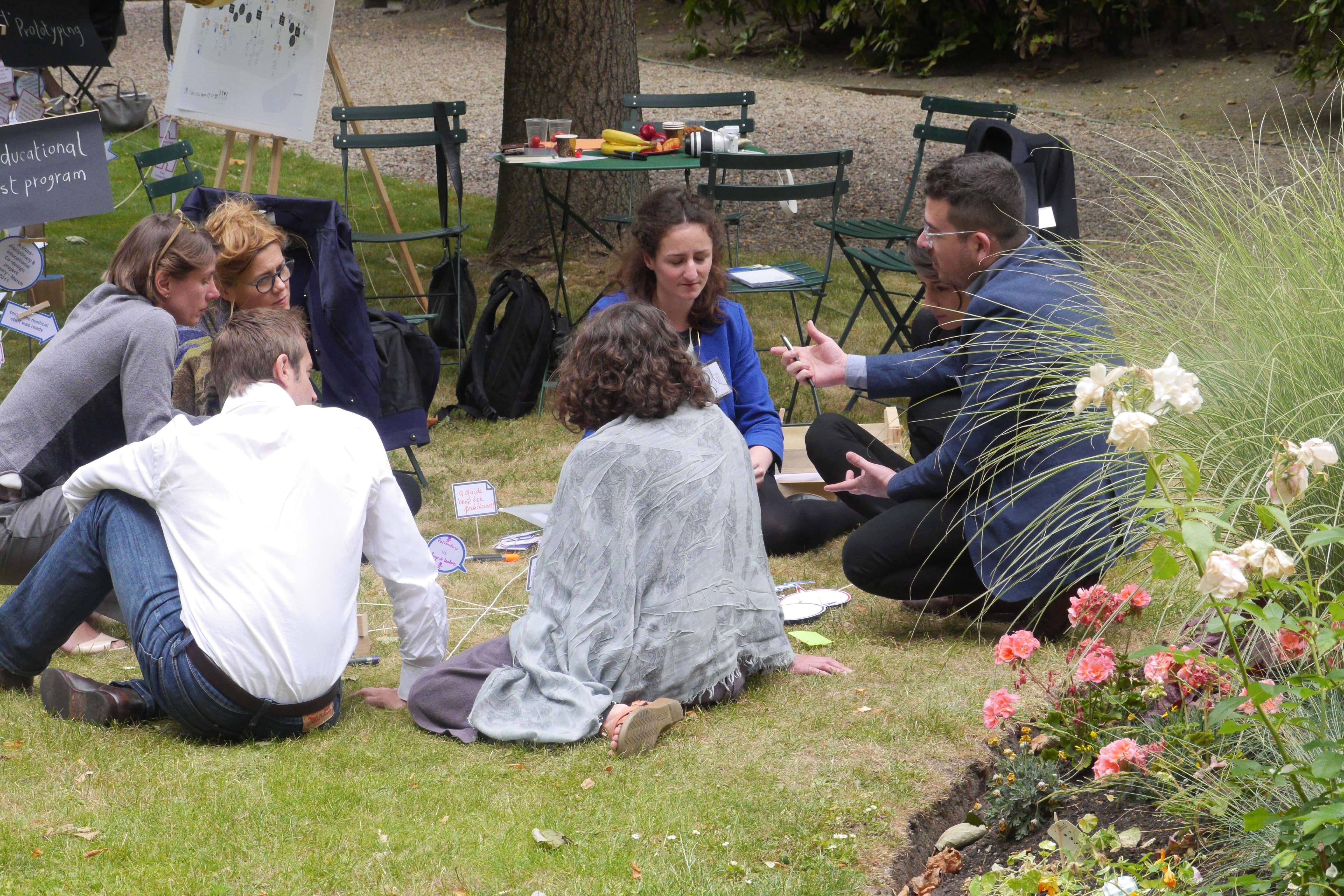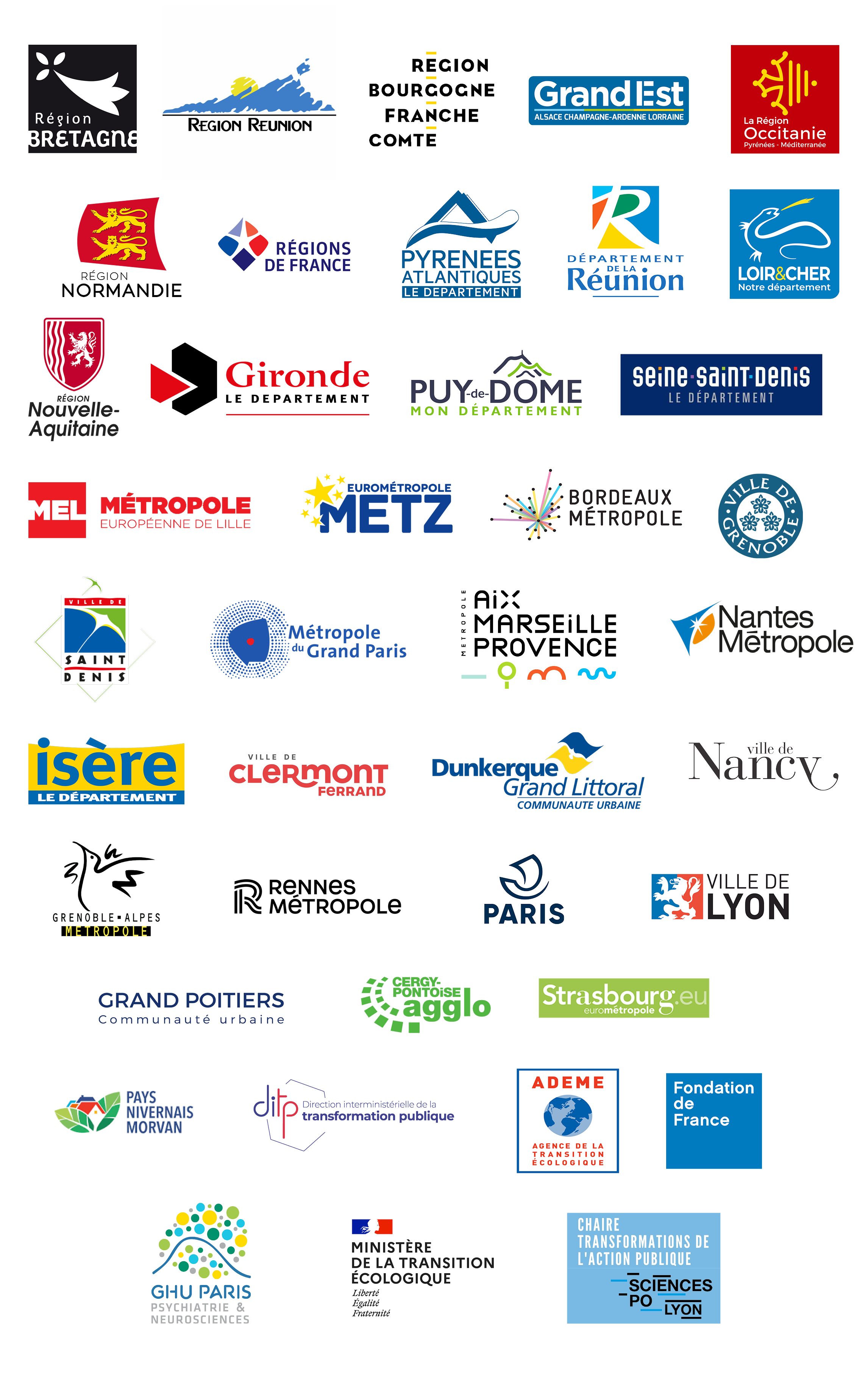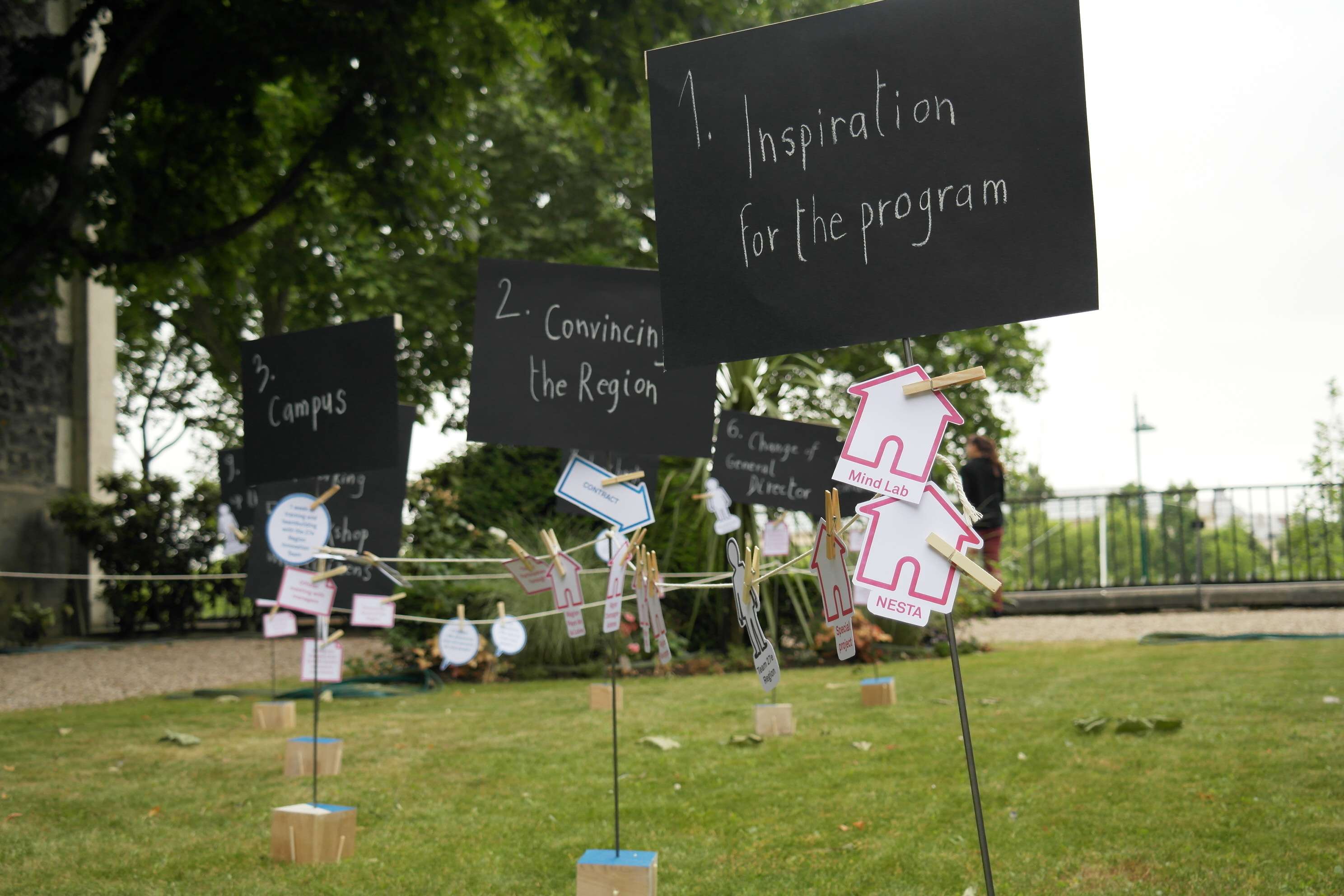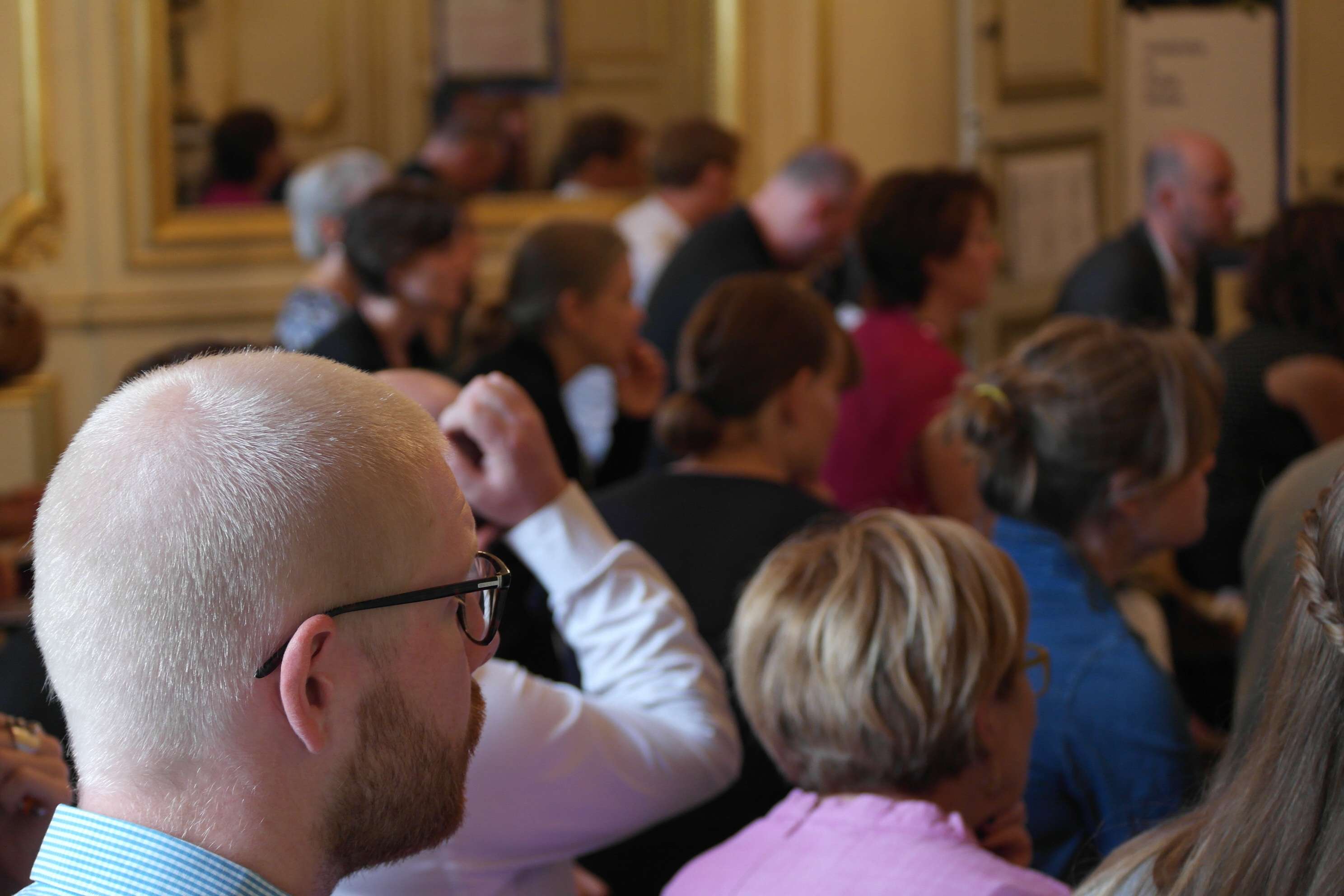On June 18 and 19, La 27e Région and the MindLab (Denmark) have co-organized in Paris « Immersion in Public Design », an international workshop that brought together forty pioneers of public innovation (1) from the USA, Canada, Mexico, Chile, Denmark, Great Britain, Belgium and of course France. The goal of the workshop, held under the umbrella of the program Design for Europe, was to explore new ways to innovate in a more systemic way into public sector, based on real cases provided by participants. The first day was held outdoors in the gardens of the Ministry of Decentralization and Civil Service, and the second at Superpublic, a coworking space specialized in public innovation in the 11th arrondissement of Paris. On Friday afternoon, another session was also attended with the same participants at the invitation of the OECD, to lay the foundations of a future international program exchange and sharing between public innovation labs worldwide.
The many exchanges have added some significant interventions from Sarah Schulman (InWithForward), Charles Leadbetter, Francois Jegou (Strategic Design Scenarios) or Giulio Quaggiotto (Nesta) to name a few. What can be learned from these two intense days ? More than generic or definitive teachings, here are some trends heard here and there.
Building on the diversity of contexts.
As attested by the participation in the workshop, the initiatives come from all over the world and are of great diversity: the scales are diametrically opposed (Mexico City, Region Pays de la Loire, US Ministry, the European Commission) , the purposes and angles of attack vary (from « low tech » social innovation to open data), levels of experiences fluctuate (some have only few months of experience whereas others have almost 15 years of service such as MindLab), and especially political cultures, economic, social and cultural are very different, even difficult to compare. How to compare two countries, when the number of inhabitants of one is equivalent to that of a city in the other? Can we compare the needs of transforming a small local authority with a huge national bureaucracy ? Certainly not. Still, it was striking to see these initiatives betting on the same trend in favor of human-centered innovation and the increasing co-design of public policies.
Re-thinking the concept of reform
Nobody seems to be satisfied by the simple adage « do better with less » to characterize any new reform. First, what’s « better »? and what’s « less « ? In a more complex world, the more simplistic formula is often the worst. This prevents us from truly working on the basis of one equation less manichean and balanced, which comport other fiscal performance criteria, but also of others criteria with more signification, such as the improvement of the experience for the users, the added-value of the democracy, the transparency, the autonomy of individuals, or the gain on the social and ecological plan ?
Re-designing policy making
Debates still exists on the potential and limits of design or ethnology in these efforts. But we must now go beyond. Everyone agrees to say that we should not mythify these methods (Charles Leadbeater) or at the contrary, see simple additional tools in the innovation toolkit (Francois Jegou). The challenge is more to learn from these practices to achieve more structural changes in the very core of the policy process. For example, leaving the culture of excellence to grow, with officers and elected, that of ingenuity ; introducing trial-and-error zones, « crash test » as in Region Pays de la Loire, and reflexivity throughout the course of public policy ; shifting from logic of performance to a logic of cooperation and ingenuity ; by starting from the most remote populations to re-examine the system efficiency (Sarah Schulman) ; by changing radically the political and administrative routines, the agenda setting for the evaluation of public policies ; by thinking upscaling and mainstreaming as a viral process, network, or even as an evolutionary process (Francois Jegou, Giulio Quagiotto) ; by considering these forms of innovation such as new practices, to revalue them relative to more traditional skills as legislation and management (Jesper Christiansen).

Professionalizing public innovation
In this context, « labs », seen as new multidisciplinary teams embedded in the core of public institutions, appear as areas where such practices are protected and promoted. They are part of these new « strange devices » which aim at thinking the new normality (Charles Leadbeater) and prepare the public sector for a world of resilience (Thomas Prehn). The questions focus less on the principle than on the conditions of their establishment and development: how to create a governance and funding model that gives them both enough institutional legitimacy to play an active role, but also the sufficient autonomy for being hands free? In short, how to institutionalize without losing the pirate side? How to create alliances internally and externally to prevent from being isolated in the institution? Where does the work of the lab starts, and where does it end? How to better converge the different fields of innovation in labs? (Digital, social innovation, civic participation, etc.). Experience feedback exists, and most of them advocate a gradual rise step by step, by doing the proof of concept. But the community expressed the need to better share each practice, to share strategies, but also tactics and « tricks » to get there.
Next step:
LABWORKS, launched by Nesta, will gather in London on 9 and 10 July about 40 100 public innovation laboratories currently recognized in the world. We will be there!
Stéphane Vincent, Délégué Général de La 27e Région
(1) Main attendees : OPM Lab (USA), Central Innovation Hub (CAN), LabGob (Chili), Nesta (GB), Laboratorio Para La Ciutad (Mexico), MindLab, ministère de l’économie, ministère du travail, ministère de l’éducation, City of Odense (DK), OECD (FR), Région Pays de la Loire, Région Paca, Ville de Paris, Ville de Nantes, SGMAP, La 27e Région, la Fabrique de l’Hospitalité, Plausible Possible, Care & Co (FR), Joint Research Center, Strategic Design Scenarios (BEL), etc.
La Fabrique de l’Hospitalité
The « Fabrique de l’hospitalité » is a department of Strasbourg Hospital’s general management. It’s main goal is to facilitate co-design between hospital workers and users in order to improve the hospital care of the patient and his close relatives with tools inspired by social science, arts and design.
We’ve been exchanging for a long time with the 27e Région’s team about our reflexions and practices. The participation to this kind of meeting is always very instructive for us. We particularly appreciate to turn out our thoughts and mix it to others social and political cultures thanks to the international dimension of the meeting, but also thanks to thematics and difference of scale. Sometimes we’d like to go further with some participants and dig into the issue. The combination of workshop and plenary sessions is useful, so as the short speeches which we found particularly inspiring : Charles Leadbeater, Sarah Schulman. It is a nice way for us to create our foundations and to find our place in the « movement » of transformation of public policies.
A short exchange with Brenton Caffin (Nesta) emphasizes the necessity to learn how to create real cooperation with citizens. But there is also a necessity to convince officials and politicians to renounce to a part of their power -a new mindset that you don’t learn at school.
Barbara Bay
More about this event? Come our website to discover the videos, presentations… Here





